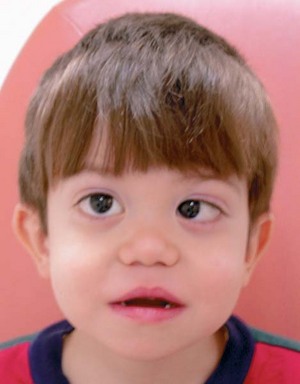Stickler syndrome is a relatively common inherited disorder that affects the body’s collagen. The syndrome is often referred to as other names including David-Stickler syndrome, Stickler-Wagner syndrome, Wagner syndrome, and Weissenbacher-Zweymüller syndrome. However, the preferred name for the condition remains Stickler syndrome, named after Dr. G.B. Stickler who first studied and characterized the disorder in 1965. There are different forms of Stickler syndrome and patients who have the disorder have a wide range of symptoms that vary in severity. Regardless of the type of syndrome present or the symptoms, Stickler syndrome is usually not life threatening. Patients can go on to live relatively normal, happy lives.
Stickler syndrome is a type of collagenopathy. More specifically, it is a subtype of collagenopathy, types II and XI. Collagenopathies are a group of disorders that affect connective tissue. The effects are caused by defects in collagen, the main protein in connective tissue. Collagen is extremely important in the body because it provides structure, strength, and elasticity. There are twenty-eight types of collagen. However, in the case of Stickler syndrome and other collagenopathies, the only types of collagen affected are type II and XI. These two types of collagen are both components of hyaline cartilage.
Stickler syndrome is caused by genetic mutations during fetal development. It is a sex independent autosomal dominant trait. Basically, only one parent needs to have the gene to pass it on and it can be inherited by either males or females. With each pregnancy, there is a fifty percent chance the child will develop the disease. There are even some cases in which there are no family history of the disease. This is because of a new mutation. Stickler syndrome is associated with mutations in the COL11A1, COL11A2, and COL2A1 genes. These are the genes responsible for the production of collagen types II and XI. These mutations lead to defective collagen. Thus, causing the effects of Stickler syndrome.
There are at least three types of Stickler syndrome, all of which are cause by a different genetic mutation. Stickler syndrome type I (STL1) is caused by a mutation in the COL2A1 gene on chromosome 12. This disorder is sometimes referred to as hereditary progressive arthroophthalmopathy, vitreous type Stickler syndrome, or vitreous type Stickler syndrome. Stickler syndrome type II (STL2) is caused by a mutation in the COL11A1 gene on chromosome 1. It is also referred to as vitreous type 2 Stickler syndrome and beaded vitreous type Stickler syndrome. Stickler syndrome type III (STL3) is caused by a mutation in the COL11A2 gene on chromosome 6. It is sometimes called nonocular type Stickler syndrome. Although there is evidence to suggest that there is at least one more form of Stickler syndrome, it has yet to be confirmed.
Stickler syndrome affects about one in ten-thousand people. Individuals with the disorder experience a wide range of symptoms that vary in severity. Perhaps the most distinct characteristic of the syndrome is a somewhat flattened facial appearance. Some other facial/cranial problems include Pierre robin syndrome, cleft palate, frequent ear infections, and difficulty swallowing. Individuals with Stickler syndrome have many problems with their eyes. Specifically, they have changes in the vitreous humor which can lead to glaucoma, retinal detachment, and cataracts. They are also more likely to be nearsighted. Individuals with Stickler syndrome also have many problems with their ears. The most severe of these problems is hearing loss. Many individuals are particularly flexible when they are young. As they age, however, they begin to experience arthritis-like symptoms. Other symptoms include vertebrae abnormality, mitrovalve prolapse, curvature of the spine, hunchback, joint pain, and severe back pain.
There is no true test for the disorder, aside from genetic testing. Doctors usually look for the normal characteristics of Stickler syndrome. If he/she suspects the disorder, he/she will probably run a genetic test to confirm. Obviously, there is no cure for the disease. Moreover, the disorder itself cannot be treated. Instead, treatment is aimed at relieving or preventing the many problems associated with the disorder. For example, there is surgery that can repair cleft palate, laser surgery for retinal detachment, and hearing aids for hearing loss. Also, anti-inflammatory medicines are particularly helpful in minimizing pain associated with the disorder. It is important to keep regular doctor visits if you are suffering from Stickler syndrome. These check-ups help aid in the prevention of any new complications of the disorder.
Stickler syndrome is a relatively common genetic disorder. Although it is usually not life threatening, it can be quite serious. However, thanks to medical advances, patients with the disorder can expect to live relatively normal, happy lives.
Sources
Wikipedia
Stickler Syndrome Support Group
